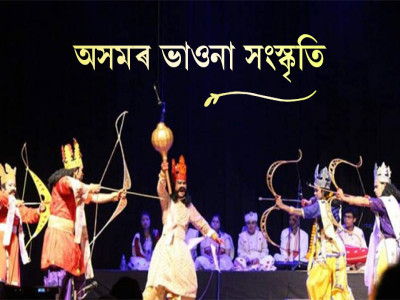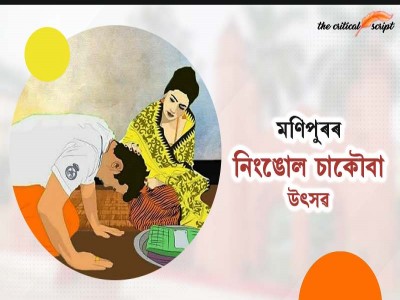
What to Eat when you are on the Streets of Arunachal Pradesh
One of the things that shows off a place's culture and tradition is its food. Food can be categorised as having an original and traditional touch or as being influenced by other cuisines perhaps a little bit.
Arunachal Pradesh is a region that
comprises several different cultures, cuisines, traditions, and identities.
The state is home to numerous distinctive varieties of indigenous peoples' traditional foods as well as various cuisines and cooking styles that were influenced by other places.
Below Inhave highlighted a few of the delicious street foods you can savour while in Arunachal Pradesh aside the wide variety of lip-smacking traditional dishes the land has to offer.
Flavours of Arunachal Pradesh
Dinkio (smoked meat)
The native Tani clans of Arunachal Pradesh are known for their traditional dish called dinkio. It is made by smoking the meat, ideally, cow or Mithun meat (yes, we are indigenous people with different cultures; we eat almost everything). The fun part is that it can be preserved for as long as possible without any fear of the meat getting rotten. When it is stir-fried with vegetables and seasonings, it is incredibly appetizing. It is a delight to eat it alongside local apong (local alcohol) or other alcoholic beverages. In addition to being delicious when fried, it is also delicious when boiled with bamboo shoots, laipatta (a type of lettuce), or any other vegetables. The best dinkio to eat is one prepared by any Tani clan (such as Tagin, Nyishi, Galo, Apatani, etc
Laping
It is a spicy dish made with thick noodles and full of hotness. This is also a fantastic remedy if you have sinusitis and a blocked nose. This dish will literally give your face a blush and tears of joy because of how good it tastes and, well, because it is spicy. Maybe you will become a fan of Laping, and that will help to cool down its hotness (all pun intended). It comes with a bowl of soup and chutney (a spicy sauce). I recommend eating the dish prepared by the Monpas and Nepalis, since they make it the best. I guess because we share borders with China, Bhutan, and Tibet, we have acquired the taste of the cuisine that has its origins in those countries.
Chowmein
Chowmein is a fried noodle dish in
soy sauce, topped with vegetables, condiments (chilli and onion), and a secret
ingredient: MSG. Although chowmein is consumed throughout India, the chow chow
of Arunachal Pradesh is unmistakably different. Contrary to the chows outside
of Arunachal Pradesh, it is different in the sense of the cooking methods and
ingredients employed. Chow is served with a bowl of soup, which you can order
again, as well as a side dish of chilli chutney and freshly diced green peppers
and onions (if requested). I'd advise chowing down on chowmein prepared by the
Nepalis and Monpas who live in Arunachal. The best is made by them. Their
cooking for chow do not feature Indian spices like garam masala, turmeric, or
red chilli powder.
You can get options such as Chicken Chow Mein (most commonly eaten), Pork Chow Mein (most commonly preferred), Vegetable Chow Mein, Egg Chow Mein, etc.
Momo
In its simplest form, momo is a dish, a type of dumpling made of flour dough stuffed with meat, onion, chilies, ginger, garlic, etc. Again, it is consumed throughout most of India, and once again, the momos from Arunachal have a particular flavour. Momos are the preferred dish among locals who don't want to consume heavy meals like chow or thukpa. Additionally, momo includes soup and chutney (the same kind of chutney you get for Chow Mein) when it is served. Yet again, I'd advise you to try them prepared exclusively by the Nepalis and Monpas in Arunachal Pradesh. Momos come in both vegetarian and non-vegetarian (chicken, beef, pork, and mutton) varieties, however to be completely honest, if you were to forgo the vegetarian version, you would be missing out on the authentic flavour and experience.
Thukpa
Another dish that has been influenced by Tibet, a neighbouring country, is thukpa, a soup noodle dish. In this recipe, plain parboiled noodles are dipped in a broth made of either meat or vegetables and then topped with shredded meat, vegetables, peppers, and onions. Since it already has a soup base, it is just served with homemade chilli sauce or store-bought sauces. One bowl of thukpa will be enough to quench your temporary hunger thanks to the people's generosity. Thukpas come in vegetarian and non vegetarian(chicken thukpa, egg thukpa, pork thukpa) varieties. In my personal opinion, the Nepalis make them the best. But the thukpas served out of a Monpa kitchen is pretty darn good too. The dish is widely available and can be enjoyed anywhere across the state.
The chops
All three of these fritters—chicken
chop, alu (potato), and anda (egg) chop—have savoury fillings inside.These are
influenced by the different regions of the country outside Arunachal. The
fillings are quite tasty, unique, and appealing.
Depending on the vendor, it may be served with tomato chutney, pudina chutney, dhaniya chutney, garlic and chilli chutney, or any combination of them. On fine evenings or on chilly or rainy days, these chops go best with a cup of chai (tea). My suggestion is to have these tasty chops prepared by the non-tribals of Arunachal Pradesh. They are skilled at adding flavour to the food and know what they are doing.
Ending this blog with a few
observation around the food culture in Arunachal Pradesh.
- Be
it your regular food joint or a high end restaurant, majority of
Arunachalees are very likely to order either chowmein, momo Or thukpa -
they will read everything on the menu, will ponder over their order for a
minute, but will order the same.
- Most
Arunachalees love and enjoy everything spicy.
- All
the chutneys and sauces (not including store-bought extra side dips) that
come with the dishes are handmade.
Note:
This is just a list of comfort
dishes that are generally enjoyable whether or not they are healthy. But if you
are health conscious and interested in trying Arunachal Pradesh's delicious and
healthy cuisine, please await my next write up.
Disclaimer: The opinions expressed in this article are those of the author's. They do not purport to reflect the opinions or views of The Critical Script or its editor.

Newsletter!!!
Subscribe to our weekly Newsletter and stay tuned.

















Related Comments